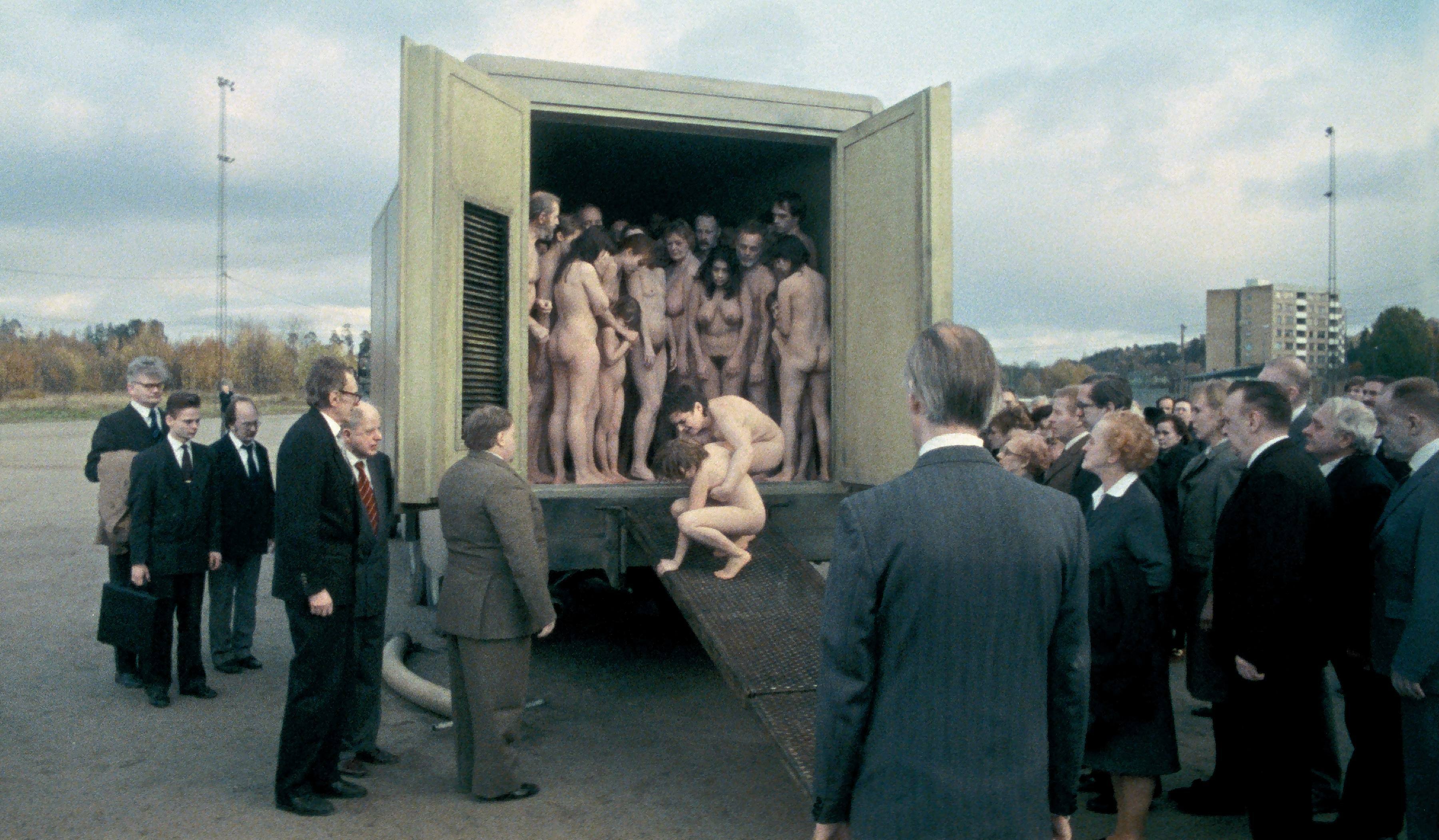Übergordnete Werke und Veranstaltungen
The Secret Services’ Cinema
Personen
Media
The Ministry of State Security of the GDR (MfS or, in local vernacular, the Stasi) inaugurated a professorial Chair of Psychology in its very own university in Potsdam-Golm as early as 1965. There it taught how useful fear can be as a means to render people submissive and to eliminate opponents. Fear is a tried and tested means of manipulation and the Stasi is not alone in having made frequent use of it.
“We must know everything!” was Mielke’s rallying cry – so some 90,000 official and 200,000 unofficial (“voluntary”) colleagues were commissioned to collate information, be it on paper, audiotape or film. Ultimately the MfS was no longer able to monitor its huge dragnet nor to make effective use of its mass of detailed information. How could it have done? Even today’s computer-aided dragnets based on state-of-the-art technologies find themselves in the crossfire of debate about data-technology overkill and the unreliability of data.
A quick look at the Stasi’s media products makes the gap between existential menace and “useless” information patently clear. The extent to which the Stasi employed film and video in its operations can no longer be reconstructed. The current inventory of the film archive of the Birthler Office (BStU) – circa 900 MfS in-house productions and circa 1150 copies of West German TV broadcasts – was collated in 1990–91 from various branches of the Ministry, which appears not to have consistently maintained a film archive or studio. In addition to training and propaganda films one finds the remains of surveillance materials such as the film Beobachtungsauftrag des Objektes “Husar” und der Verbindung “Rolle” (Mission: Surveillance of the Object “ Husar” and the Go-between “Rolle”), which draws on real 16mm footage from a surveillance operation to explain the latter’s organisation and technical implementation. Locations, focal lengths and the clothing of the persons targeted are described in precise detail – yet exactly which information was garnered by the camera-aided surveillance operation is left to conjecture. The film Beobachtungen eines westdeutschen Fahrzeuges (Surveillance of a West German Vehicle) offers insight into problematic aspects of everyday surveillance procedures but is similarly inconclusive. To the sound of a radio warning of an approaching vehicle, a cameraman struggles with a window-frame but ultimately fails to capture the vehicle on film, for it disappears from view at the decisive moment. The car’s number plates and passengers cannot be identified. Infringement of an individual’s right to privacy can be deduced here only at the meta-level or in cases in which the Stasi also films its own methods, as in Vernehmung einer männlichen Person (Interrogation of a Male Person). Here, (even though a tape recorder is running too), a surveillance camera monitors the Stasi at work. The film-roll is informative above all for today’s viewer, who sees the mendacity of the interrogator’s jovial tone of voice reflected in the alleged delinquent’s fear. Wer ist wer? (Who’s Who?) – a training film about dealing with unofficial colleagues (IM) – conveys a psychological portrait of the MfS’ self-image and its use of language. The IM Eva wishes to leave the country to join her lover in the West and thereby poses a security risk for the MfS. The formerly welcome “Mata Hari” is now morally discredited in texts and images: found footage provides ample crude and opprobrious illustration of how. Likewise in Illusionen (Illusions) the MfS used its power over people, namely to obtain more or less involuntary statements from people who had returned from the West, which were subsequently used as propaganda to convert those who wished to flee the country. The MfS rarely used a commentator yet in this case, one presents a strongly moral lecture in a news broadcast style.
In contrast to the MfS’ media productions, which were often idiosyncratic in formal terms, the training films preserved in Hungary about the work of the security forces there almost exclusively pursued a more classical format. Titkos örizetbevétel (Conspirative Feed) describes in short, staged scenarios how one might best “invite” a potential IM to a secret chat about recruitment. The Hungarian training films frequently follow a classic feature film dramaturgy, spiced up by detective film elements that serve to lure the viewer into a cinematic dream world. The trainee colleague is invited thus to become a minor James Bond-type figure and can therefore more easily banish from his mind the real consequences of his actions – the violation of fundamental personal rights.
We apologise for any inconvenience that may be caused by material defects in the preserved videos or by the requisite measures undertaken by the BStU to mask the real identity of the persons shown, in order not to infringe on their personal rights.
Presented with the support of The Office of the Federal Commissioner for the Preservation of the Records of the Ministry for State Security of the GDR (BStU) and the Collegium Hungaricum Berlin.
Karin Fritzsche



